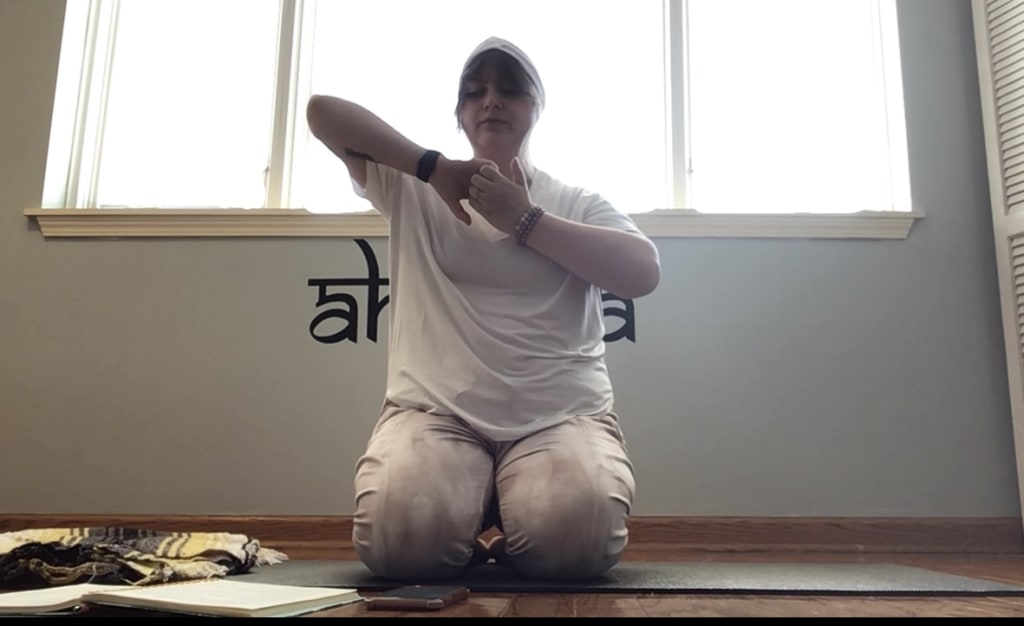An Introduction to Kundalini Yoga
essentials of the yoga of the mind

Kundalini yoga has been around for thousands of years. It is a combination of Raja yoga, Bhakti yoga, and Shakti yoga, however, westernized Kundalini (made popular by Yogi Bhajan) also includes Tantric yoga and Sikhism. The word Kundalini comes from the sanskrit word for “coiled” or “snake” and it is believed that kundalini is a divine energy coiled around the base of the spine. Through daily practice of mantras, asanas, pranayama, and meditation, one is able to awaken this dormant energy and spiral it up to their crown. Once you are able to do this, you have reached a higher consciousness and, essentially, enlightenment.
Kundalini yoga can seem daunting and confusing, but once you've practiced a few times, it becomes quite simple. Now I'll go over some of the more important aspects of Kundalini, such as mantras and their meanings, to help you understand it better.
Most Kundalini mantras are in Gurmukhi and Sanskrit, both languages originating from India. We will start with the Adi mantra, which is always chanted three times before starting any Kundalini practice. This is done to help us connect to the higher power; it is like switching from AM to FM radio so you get the right frequency. The Adi Mantra is ONG NAMO GURU DEV NAMO(oong nah-mo g'roo dave nah-mo) which essentially means "I call upon Divine Wisdom". After the Adi mantra, the most essential mantra is the Seed mantra: SAT NAM. Sat Nam (set naam) means "Truth is my identity" and is said to awaken the soul. WAHE GURU (wa-hay g'roo) is another essential mantra; it means "wonderous god" and chanting it elevates your spirit. These are a few of the essential, basic mantras of Kundalini. Another essential mantra is SA TA NA MA. This mantra is said to be the sounds of the universe as SA means infinity, TA means life, NA means death, and MA means rebirth. Practicing this mantra daily is great for mental clarity and stress relief.
Some other important aspects of Kundalini are kriyas and breathwork. Kriya is a Sanskrit word meaning "complete action" and can be described as yogic exercises put in a specific sequence to manifest a particular outcome, whether physically, mentally, or spiritually. I like to call them moving meditation, as many of them require you stay in a meditative state. During kriyas, you also tend to practice different breathwork techniques. Breathwork, or pranayama, is done to enhance your life by taking longer, deeper breaths. Pranayama means "expanded life force", which is what occurs when you learn to control your breathing. Taking longer, deeper but less frequent breaths helps lower stress, relax the body, and increase mental awareness. The most used breathwork techniques in Kundalini are Long Deep Breathing, Breath of Fire, and breath retention.
A lot of people are afraid of Kundalini, which is understandable. Until you actually practice it, Kundalini can seem strange and difficult. Kundalini yoga includes a lot of actions many might find uncomfortable or embarrassing (such as chanting), but overcoming that feeling brings you more confidence and you realize you are working towards a higher consciousness. It seems many people also believe Kundalini can cause you to be out of touch with reality, but that just isn't the case. Of course, some people may become consumed by their practice, but that is not a common occurrence. Kundalini is called the "householders yoga" as it is not for people who are looking to dedicate their lives to meditation, but for people with families, jobs, and other priorities. With all that being said, it may take some time to grow more comfortable with Kundalini, but if you continue to practice, your ego lets go and you understand you are doing something beneficial for yourself!
About the Creator
Skye Vaillancourt
twenty-something year old writer, painter, yogi, goddess.






Comments
There are no comments for this story
Be the first to respond and start the conversation.